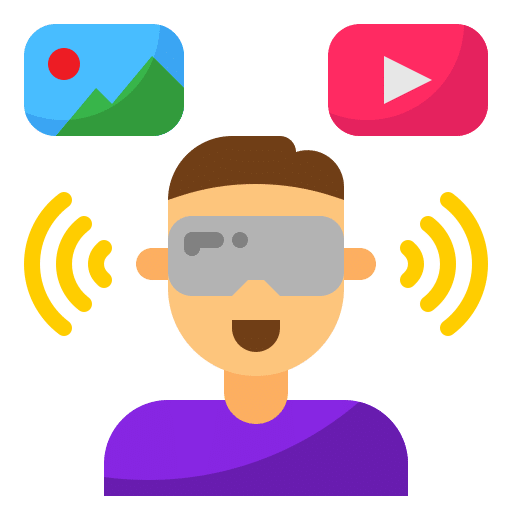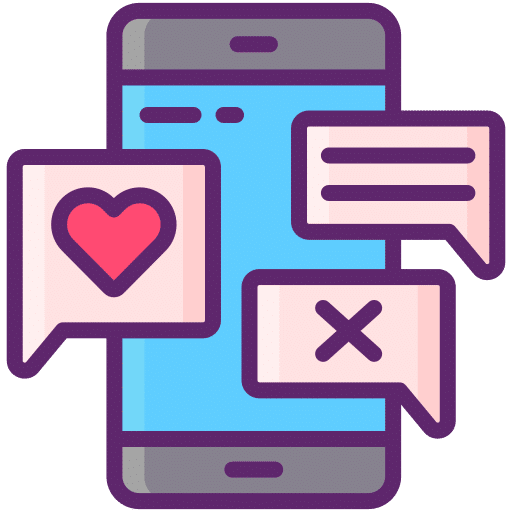Selling Through Crisis: 4 Ways Your Cancelled Events Can Still Generate You B2B Leads and Sales

Author: Julia Nymchynska
In the world of B2B sales, as any seasoned salesperson will tell you, the most powerful tool you have in your arsenal is the ability to get in front of buyers and talk to them in person.
With the arrival of the COVID-19 crisis and trade shows and conferences being cancelled left and right, many B2B businesses are now left scrambling to figure out how to survive without their best weapon.
But never fear, because there is a silver lining to all this.
The great news is that you can still sell effectively without face-to-face meetings. While it’s true that the traditional “supply chain of selling” has been disrupted, that doesn’t mean that you’re completely out of options.
Just because your events have been cancelled doesn’t mean you’ve lost the ability to develop meaningful relationships. Here’s a quick guide on how you can still take advantage of that cancelled conference to generate leads and sales:
1. Set Up Your Own Virtual Conference
The most obvious solution is to turn your conference into an online event but, before you do, it’s important that you’re still creating a valuable virtual experience for your attendees.
Think carefully about why people attend trade shows and conferences in the first place. While educational lectures and talks by experts are certainly one reason, it’s not the only reason why industry events are so popular. Which is why you need to do more than just throwing up a few recorded talks online and calling it a day.
For example, in light of the recent crisis, MongoDB has repurposed their annual MongoDB World conference into MongoDB.live. But instead of just assembling a variety of live streamed keynotes and presentations, organizers have also arranged for digital breakout sessions with experts, setting up a “community cafe” for people looking to network, and have been working with speakers to adapt their presentations to an online format.
The team at MongoDB understand that the value in their events also lie in the opportunity to network and connect with other industry professionals. Knowing this, they’ve strived to create a virtual experience that still allows for those opportunities.
When creating your virtual conference, it’s vital to keep in mind that there are a number of key differences between running an offline and an online event.
To really continue building authority and maintain the interest of your brand in a time of crisis, make sure that you’re taking full advantage of all the digital tools at your disposal. The delivery method may have changed, but your goal of providing value remains the same.
2. Engage Effectively Online
Considering that one of the quickest ways to destroy a relationship with a potential customer is to provide inconsistent service or communication, with 33% of Americans saying that they’ll consider switching brands after a single instance of poor service. Now is not the time to let your engagement and communication fall to the wayside.
“Whilst practicing social network distancing, we can stay connected and united virtually. As we’ve always had,” says Bob Perkins, Founder and Chairman of AA-ISP.
Despite the fact that it’s near impossible to engage with someone face-to-face, that doesn’t mean you can’t continue to build a meaningful relationship with your prospects and customers online.
If you haven’t done so already, now is the time to take full advantage of your sales engagement platform to ensure that you’re continuing to have relevant and timely interactions with your audience.
Using your sales engagement platform (SEP) you can set up alerts, drawn from multiple sources, for specific accounts and prospects so that you’re constantly up-to-date with the latest news and information about them. Allowing you to ensure that you’re always having the right conversation with individual members of your audience.
Another way to engage effectively online is to set up your SEP so that all your communication is properly managed and coordinated. Whether you’re engaging with your customers through email, chatbots, or even social media, account executives and sales reps can use their SEP to guarantee that your messaging remains consistent across the board.
3. Reinvest into PPC Marketing
According to research by PredictHQ, up to 33% of major events have been cancelled so far with a whopping 500% increase in cancellations and postponements in the month of February alone. This is obviously a blow to many B2B businesses, many of whom have invested the bulk of their marketing budgets into attending or participating in industry events.
In the wake of all these cancellations and postponements, B2B brands are encouraged to re-allocate their budgets to Pay-Per-Click (PPC) advertising as a means to generate leads leads and sales.
Unlike going out and meeting prospects, PPC advertising is a form of inbound marketing where you create custom ads that specifically target your ideal customer personas. With PPC advertising, you can either target specific keywords on search engines like Google or target specific audience segments on social media networks like Facebook or Instagram.
PPC advertising can be an incredibly powerful tool for B2B brands with research from Hubspot finding that 65% of B2B companies have successfully acquired customers through LinkedIn. Furthermore, another study by Google discovered that the average business receives an ROI of $2 for every $1 they spend on Google Ads.
An easy way to take advantage of PPC advertising to create an ad campaign for all the registrants of your recently cancelled event.
Using Facebook advertising, you can use the custom audience feature where you can manually upload a list of people that you’d like to target ads. Since all the registrants are, presumably, aware of your brand already, you can set up a simple ad campaign designed to directly sell your products or services.
4. Master the Art of Online Meetings
While the above tactics are a great way of continuing to bring in qualified leads to your business, the real work in B2B selling lies in the one-on-one conversations between the seller and the buyer.
The key thing to keep in mind is that what might work very well in-person might not translate very well to an online environment.
Unlike in-person meetings you don’t have the ability to command the complete attention of your prospect. Even if you’re having a video call, you’re still only one tab-switch away from the dozens of other tabs and windows on your prospect’s desktop fighting for their attention. Making the hardest part of online meetings being the ability to control the conversation and maintaining the interest of the prospect.
A great way to keep the momentum going in an online sales call is to keep your calls short and to the point with frequent breaks in between.
Create an agenda where you and the prospect can take a short break every 10 or so minutes, with each 10-minute chunk being devoted to a single point or message that you want to get across. This way you can give you and your prospects time to refresh their mental energy and make it more likely that they’ll stay attentive throughout the entirety of your sales call.
Creating a connection is harder to do so from afar but it is most definitely possible.
Julia loves all things innovation, productivity, and tech. Currently, she’s helping companies increase their ROE (Return on Customer Engagement) at revenuegrid.com
Experience and a lot of testing have shown us that it is possible to create email templates that people actually resonate with.
You don’t have to figure it out alone, whether you’re starting off as a sales representative, looking to improve your game or providing your team with expert advice, we have your back!


